Outforia Quicktake: Key Takeaways
- All centipedes are venomous, using their venom to stun and kill prey.
- Centipedes are not poisonous, and their venom is not lethal to humans.
- Centipedes and millipedes are different; centipedes are more aggressive and have venom, while millipedes are more docile and lack venom.
- Centipedes are not harmful to have around, as they help control other pest populations.
- It is possible to keep centipedes as pets, but they require specialized care and handling.

Centipedes are just one of those animals that creep people out. Maybe it’s their big jaws, or maybe it’s the fact that they have so many legs. Regardless, many people have some sort of fear when it comes to centipedes.
But are centipedes even dangerous? Do they have venom that can hurt us?
All centipedes are venomous. They inject toxins when they bite that help them stun and kill their prey. Thankfully, when it comes to humans, it doesn’t pose much of a threat beyond hurting for a while.
In this article, we’ll go over the differences between poisonous and venomous, discuss everything you need to know about centipedes, and discuss their potential threats to people.
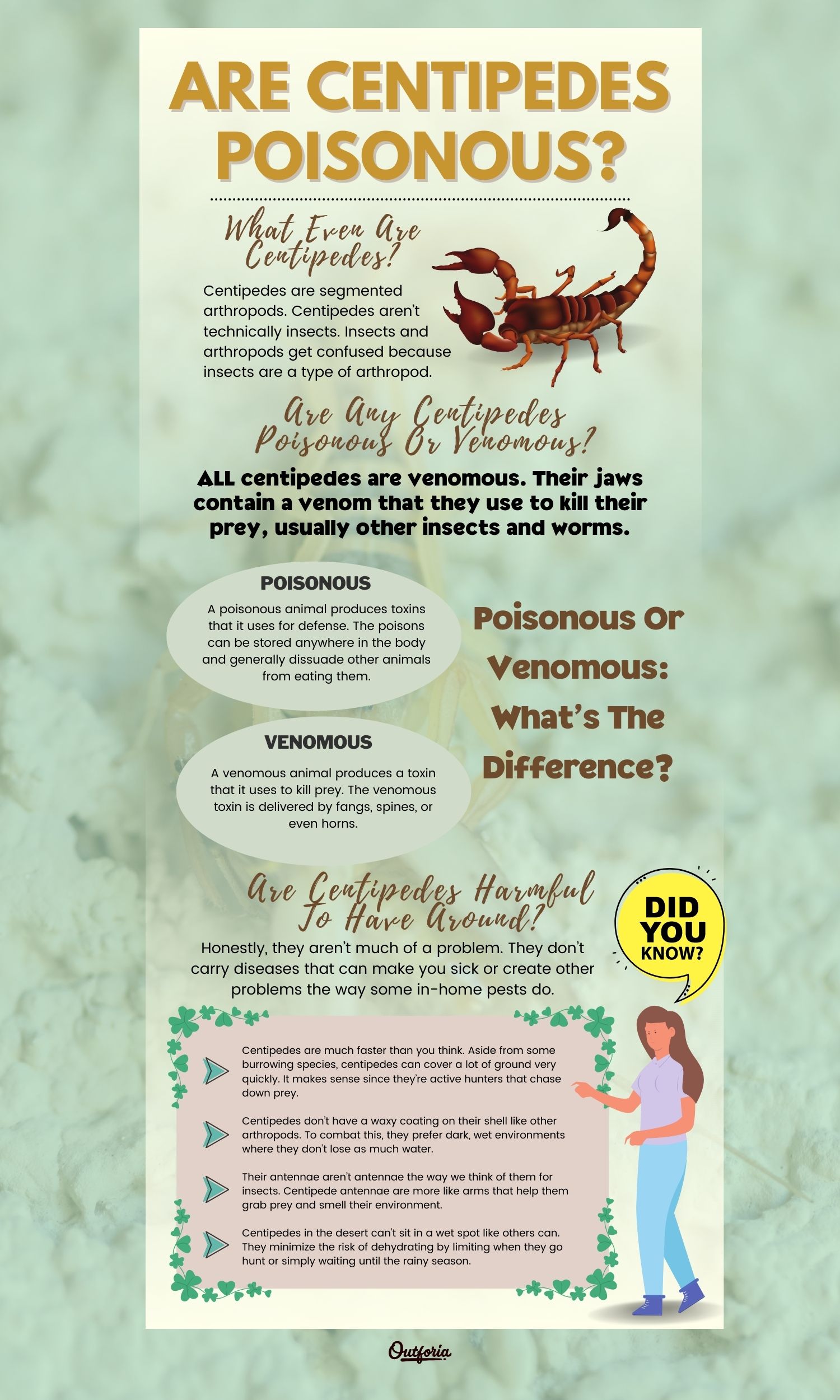
Share this image on your site
<a href="https://outforia.com/are-centipedes-poisonous/"><img style="width:100%;" src="https://outforia.com/wp-content/uploads/2022/11/are-centipedes-poisonous-infographic-11092022.jpg"></a><br>Are Centipedes Poisonous <a href="https://outforia.com">Outforia</a>You May Also Like: 17+ Species Of Poisonous Caterpillars Found Around The World
Poisonous Or Venomous: What’s The Difference?
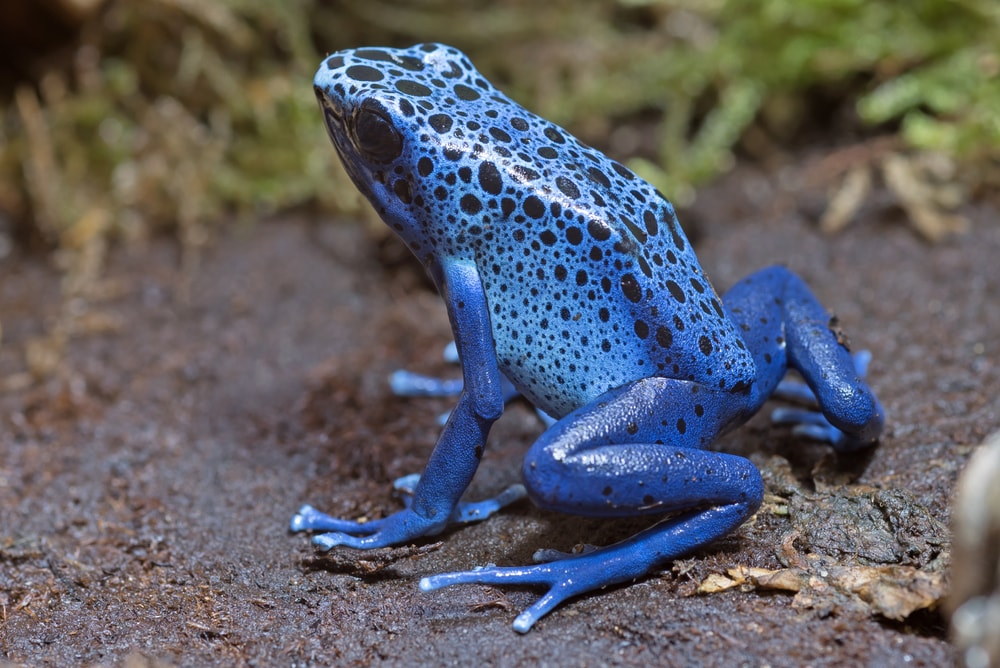
Before we get into the weird world of centipedes, there’s a bit of housekeeping to take care of. Many people are confused about the actual meanings of the words “poisonous” and “venomous.” They get used interchangeably, but the two terms are not the same thing.
A venomous animal produces a toxin that it uses to kill prey. The venomous toxin is delivered by fangs, spines, or even horns.
A poisonous animal produces toxins that it uses for defense. The poisons can be stored anywhere in the body and generally dissuade other animals from eating them.
Both venomous and poisonous animals produce some type of chemical substances that create adverse reactions when they get inside another animal.
The toxins can target many different things, from stopping blood from clotting to destroying nerves or even dissolving tissues. They can also come in a wide variety of potencies.
Not every animal that produces venom or poison can kill you. For many, you may just feel sick, or you might not have any reaction at all.
You can pretty much sum it up like this: If it bites you and you die, it’s venomous. If you bite it and you die, it’s poisonous.
What Even Are Centipedes?
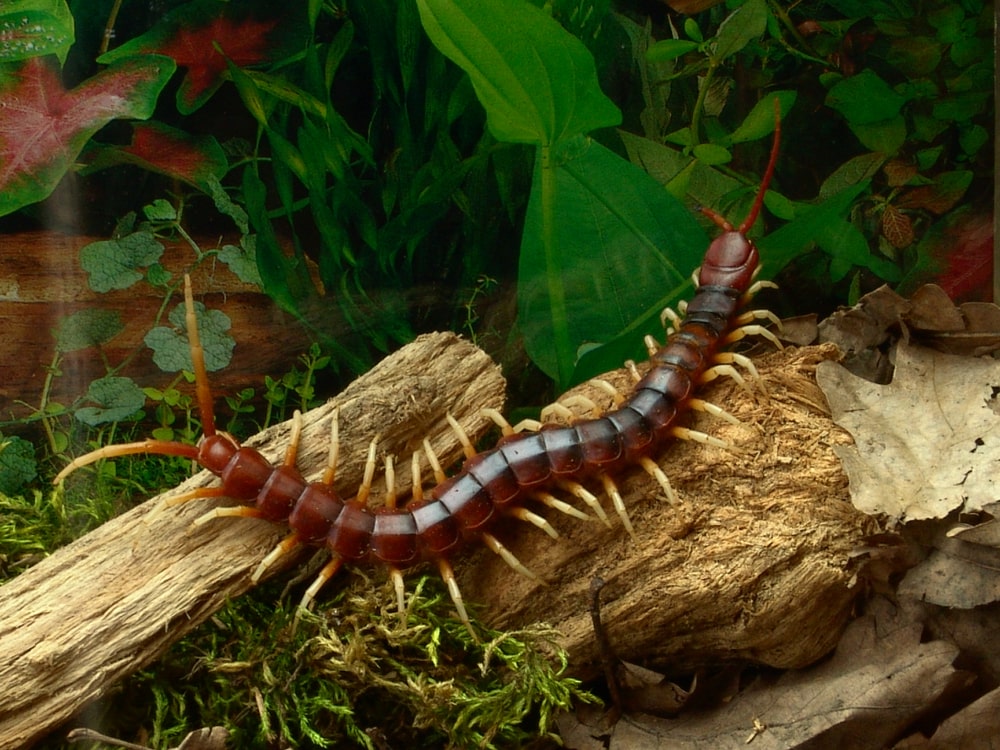
Centipedes are segmented arthropods. That means their body forms in segments, and they have a hard exoskeleton instead of an internal one. They’ve been around in one form or another for millions of years.
Centipedes aren’t technically insects. Insects and arthropods get confused because insects are a type of arthropod. All it takes to be an arthropod is an exoskeleton and legs with joints. Centipedes fit into the arthropod family but not the insect one.
They have flattened heads with large mandibles and two limbs that cover their mouths. At the end of those limbs are sharp claws used to grip prey and inject venom into potential food items.
Most species don’t have eyes at all. The few who do, don’t have eyes that work like ours. Their eyes can only tell the difference between light and dark environments, leaving almost all centipedes mostly blind.
Each segment of a centipede’s body has a single pair of legs, one on each side. The body is made of 15 or more segments. The total number depends on the species and size of the centipede.
The last two body segments have no legs and may resemble a tail.
A centipede’s total number of legs can vary from a minimum of 30 to a maximum of 354 legs.
How big a centipede can grow is dependent upon the species of centipede. The smallest may only be a few millimeters, while the largest can reach lengths of 30 cm (12 in).
Like other insects, centipedes don’t breathe through their mouths. Each body segment can breathe independently through small openings in its exoskeleton. Their entire digestive tract is just a tube running through their body, and their digestive fluids are stored in glands attached to their mouths.
Centipedes are predators that have adapted to eat a wide variety of other animals. The majority of smaller ones’ diets consist of insects and worms. The largest ones have been known to consume frogs, birds, lizards, and mice.
You can find centipedes all over the world. Species are found in all kinds of environments, from tropical rainforests to deserts. They are even known to live above the Arctic Circle.
Centipede Life Cycle
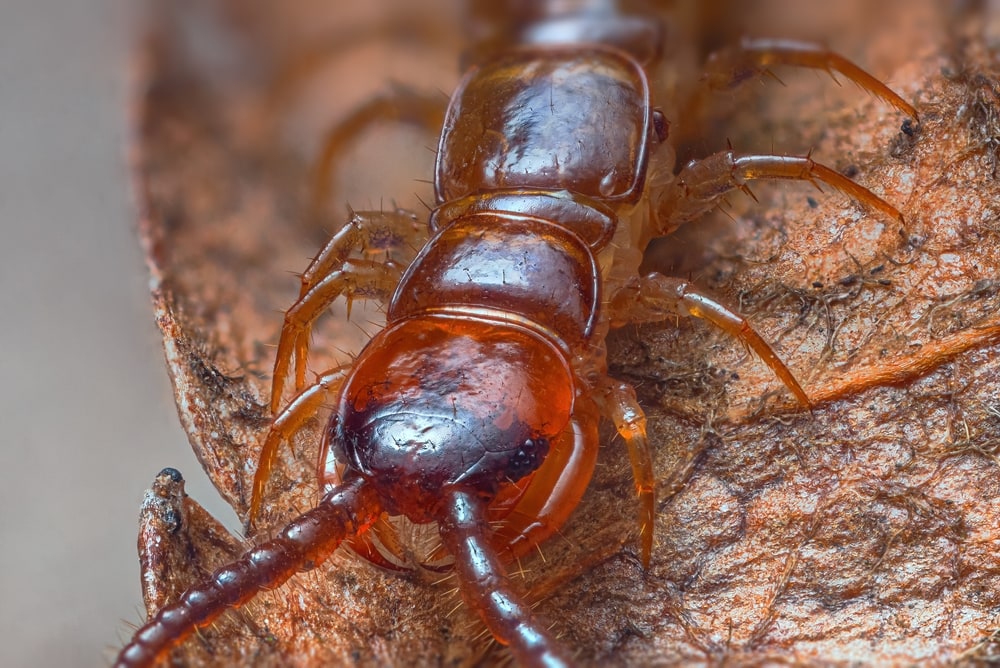
Centipedes don’t mate the way other animals do. Males leave behind spermatophores for females to pick up when they choose. It’s basically a ball of sperm.
Some species simply drop them on the ground and hope females find them. Others may deposit the spermatophore in a web and do a courtship ritual to encourage the female to pick it up.
In warm regions, there are no breeding seasons, and centipedes can lay eggs all year. In colder climates, they tend to lay eggs in the spring and summer.
Centipedes may lay their eggs in a clutch or in individual holes in the ground. There is usually no care for their offspring. Two species stay with their eggs to protect them from fungi and may even stay with the young until they’re ready to fend for themselves.
If the eggs are threatened, the female will either abandon them or eat them. Unattended eggs fall victim to fungi very quickly. A few species even eat their mother as hatchlings.
Once hatched, babies can take anywhere from one year to over three years to reach sexual maturity. Depending upon the species, a centipede may live for up to ten years.
Are Centipedes and Millipedes the Same Thing?
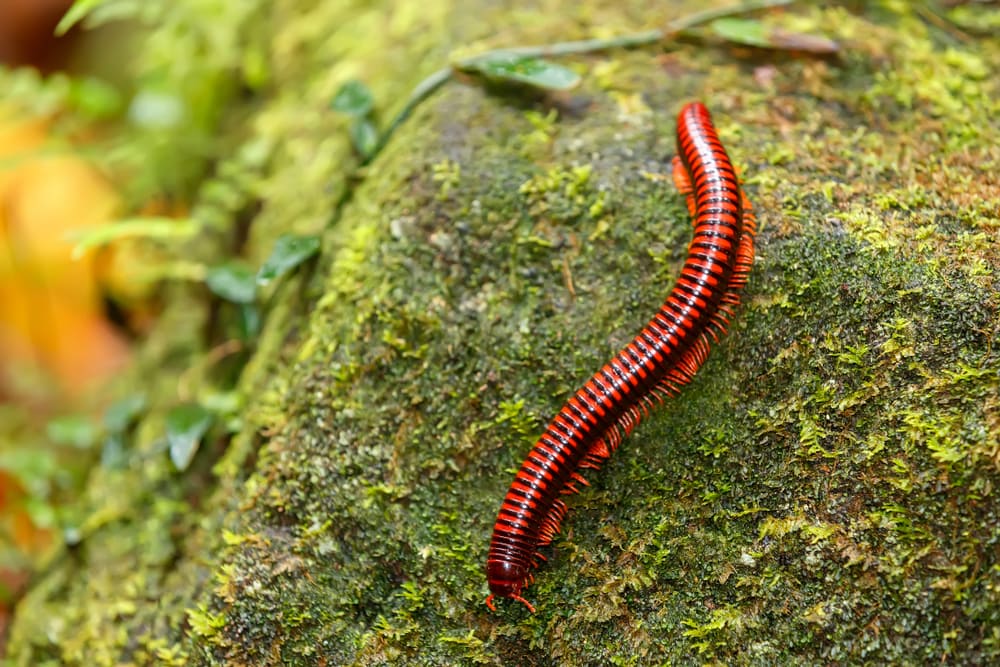
Centipedes and millipedes are two different types of animals, but they are very closely related.
Both are segmented arthropods but don’t have the same number of legs per body segment. While centipedes have one pair of legs per segment, millipedes have two. For each body segment, a millipede has four legs, while a centipede only has two.
Millipedes also lack the powerful jaws and venom that centipedes carry. They prefer to feed on decaying leaves and other organic matter, unlike centipedes that actively hunt down other organisms.
The antennae of a millipede are also much shorter than a centipede’s. Millipedes have about 750 legs, not quite the thousand that their name implies.
Centipedes are more aggressive. They’ll bite and try to escape if you handle them. Millipedes are more likely to curl up into a ball. But that doesn’t mean you should handle them.
Millipedes lack venom. Instead, they have glands that emit a foul-smelling fluid. It can stain your skin, irritate your eyes, and smells awful. Some people can have allergic reactions to their defense spray.
Are Any Centipedes Poisonous Or Venomous?
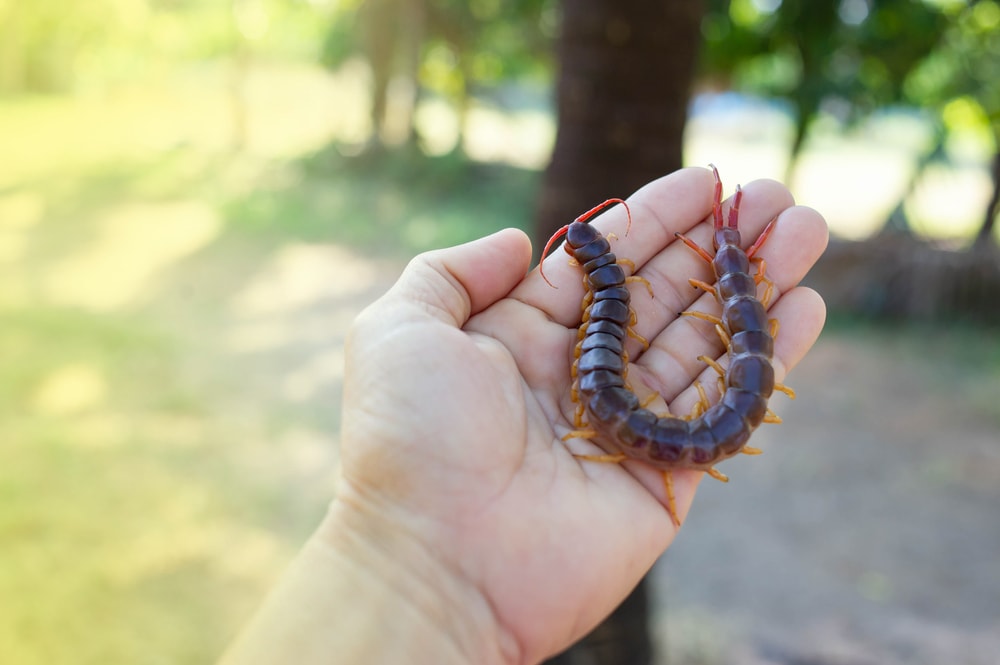
ALL centipedes are venomous. Their jaws contain a venom that they use to kill their prey, usually other insects and worms.
Centipedes are not known to attack humans. Instead, they bite in self-defense. If you come across a centipede and leave it alone, it poses absolutely no threat to you. Trying to handle a centipede or an unfortunate circumstance (like one in your sleeping bag) are the most likely times it will bite.
The jaws of a centipede are pretty powerful. They can break through the skin, especially if you get bitten by one of the larger species. When a centipede bites, it injects venom, even into people.
There aren’t any major potential risks from a bite. Their venom can’t kill a human, though some people may have an allergic reaction to it. An allergic reaction will create more significant side effects, but it isn’t common.
Generally, the bite is very painful. They bite hard, so the bite hurts on its own. But the venom can cause swelling, itchiness, and a lot of pain. These symptoms typically don’t last beyond 48 hours, but you may still have some slight swelling and a mark where it bit you.
Centipedes are not poisonous. Once you remove the head and venom glands inside the head, you can actually eat them. I wouldn’t recommend it, but it is possible to eat them without any adverse effects.
You may also like: Are There Poisonous Lizards in Florida? The Sunshine State’s Most Dangerous Lizards
Are Centipedes Harmful To Have Around?
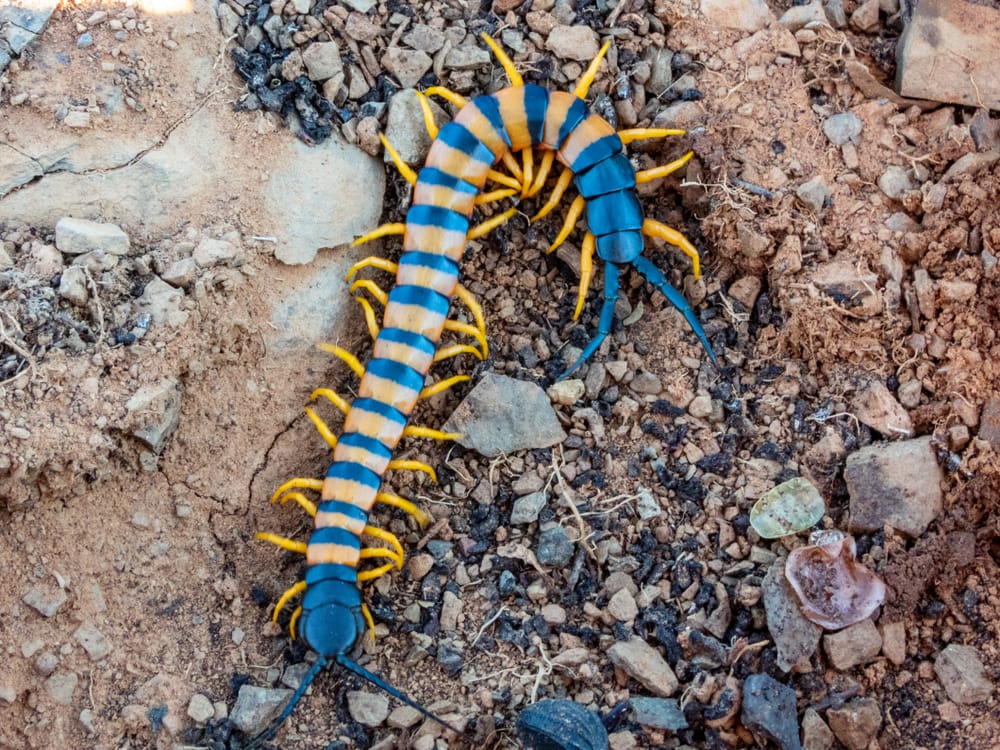
So centipedes aren’t actually dangerous to humans. They may be more dangerous when it comes to pets if you have small animals around. But are centipedes harmful to have around your home or yard?
Honestly, they aren’t much of a problem. They don’t carry diseases that can make you sick or create other problems the way some in-home pests do. They won’t eat the wood out of the house, don’t kill your garden plants, and pose little to no risk to you or your family.
Centipedes also eat other pest animals that you definitely don’t want around, like termites, ants, and cockroaches. They sometimes even go after spiders. But centipedes aren’t a good method of pest control.
But what if you just don’t like centipedes and don’t want them around? How do you get rid of them?
How Do I Get Rid Of Centipedes?
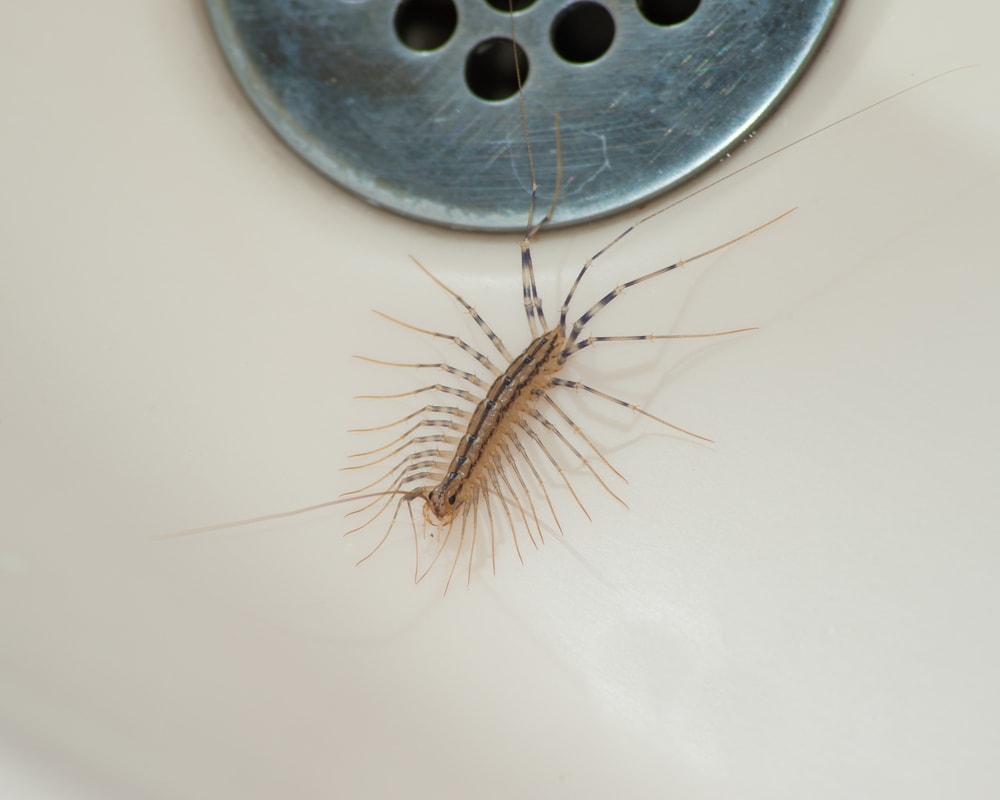
One of the quickest ways to get rid of pests in your home is to use insecticides. These chemicals kill bugs in your home, and you should be able to find some that specifically target centipedes.
You’ll want to spray or inject the insecticide around your floorboards and into any cracks you can find. Exterminators can do this for you, as well as place a chemical barrier around your home’s foundation to repel centipedes and other creepy crawlies.
The other ways to get rid of them are much simpler.
Fix leaks in your home that lead to any extra moisture being around. Replace any decaying wood beams and seal up all the cracks and gaps you can find.
Try to remove as much clutter as possible from your floors. Piles of cardboard are notorious for being breeding grounds for all kinds of insects.
Finally, you want to reduce the presence of other pests that centipedes may be feeding on. Roaches are a big one. Thankfully, most of the same steps you’ll be using to get rid of centipedes will also help get rid of any other unwanted creatures in the house.
If you end up having a large infestation of insects in your home, you may want to call in a professional. They can do a survey to figure out how big of an infestation is currently in your home and make a plan to do something about it.
Can You Keep Centipedes As Pets?
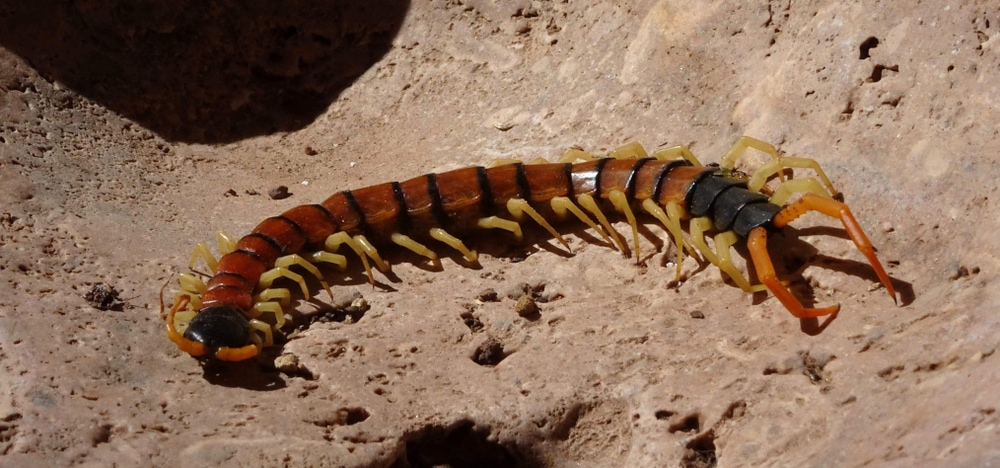
It is possible to keep a centipede as a pet. Many people love keeping some of the larger centipedes, like the massive Amazonian species.
Centipedes are not easy pets, though. They need to be kept in a secure enclosure, much like venomous snakes. Once you have the right enclosure, environment, and some experience, a centipede can be a worthy pet (though one you won’t be cuddling up with).
To move your centipede around, you’ll need snake-handling tools, paintbrushes, and thick gloves. This helps avoid them biting you when they feel threatened by being handled.
You should expect your centipede to move around most during the night. Some species will spend a lot of the day burrowed under the enclosure substrate. Centipedes are active hunters, and unlike some other insects, they don’t sit still too much.
Expect them to explore often and a lot. They hide in full light, but a red or blue bulb can help you view them without disturbing the centipedes on their nightly rounds.
If you do have a centipede, make sure to not overfeed it. Overfeeding can lead to early death.
Your pet centipede should never eat any critters you catch out in nature. Those animals are much more likely to carry diseases and parasites that can make your pet sick.
Live crickets or roaches should be given to your centipede once per week. Once per month, you can feed them something larger, like a pink mouse. They will also take worms, moths, and grasshoppers.
Only purchase centipedes and feeding animals from reputable distributors.
You May Also Like: All 21 Types Of Spiders: Identification Guide With Pictures + Facts
Centipede Fun Facts
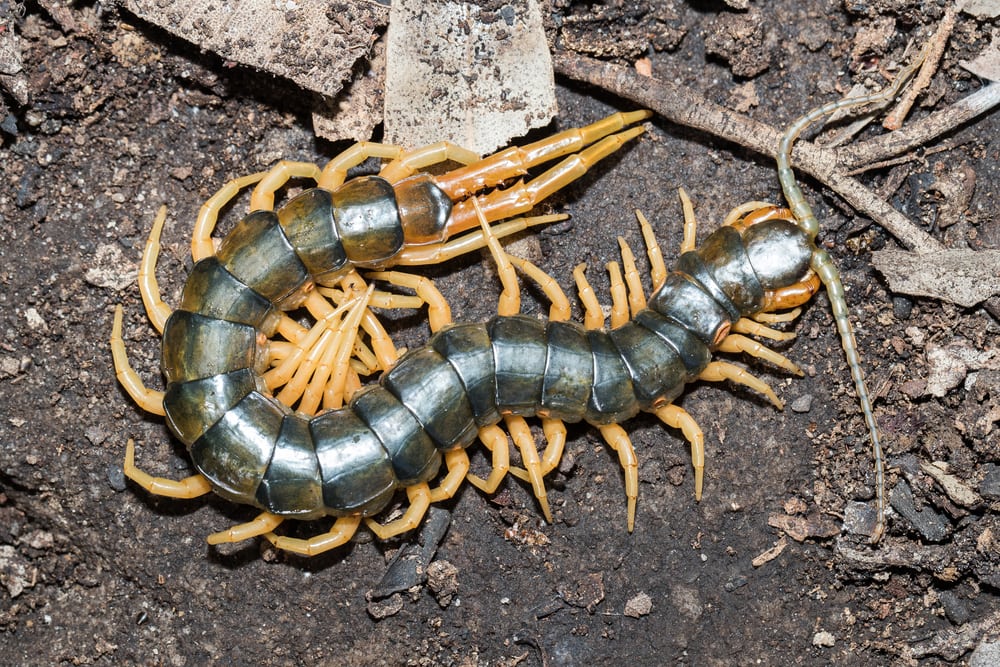
- Centipedes are much faster than you think. Aside from some burrowing species, centipedes can cover a lot of ground very quickly. It makes sense since they’re active hunters that chase down prey.
- Centipedes don’t have a waxy coating on their shell like other arthropods. To combat this, they prefer dark, wet environments where they don’t lose as much water.
- Their antennae aren’t antennae the way we think of them for insects. Centipede antennae are more like arms that help them grab prey and smell their environment.
- Centipedes in the desert can’t sit in a wet spot like others can. They minimize the risk of dehydrating by limiting when they go hunt or simply waiting until the rainy season.
You May Also Like: The 35 Different Types Of Scorpions: Sting, Size & More
FAQs
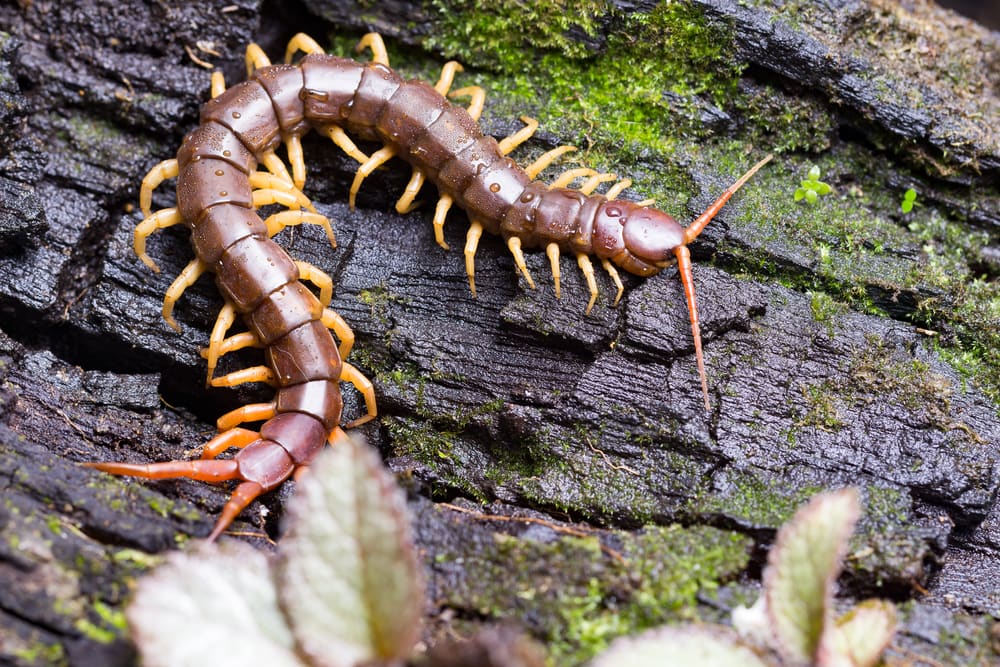
How many centipede species are there?
It’s estimated that there are around 8,000 species of centipedes.
Are centipedes deadly?
Despite rumors of deadly centipedes, they aren’t too dangerous for humans. Their bite is easily comparable to bee stings.
Are centipedes insects?
Technically, centipedes aren’t insects. They’re arthropods in the same family as crabs, crawfish, lobsters, insects, spiders, and scorpions.
How many legs do centipedes have?
Despite the names, neither centipedes nor millipedes have the right number of legs. Centi means 100, while Milli means 1,000.
Centipedes have, at most, less than 400 legs, but they may have as few as 30. The most a millipede can have is 750. Very impressive, but not quite the 1,000 their name implies.









